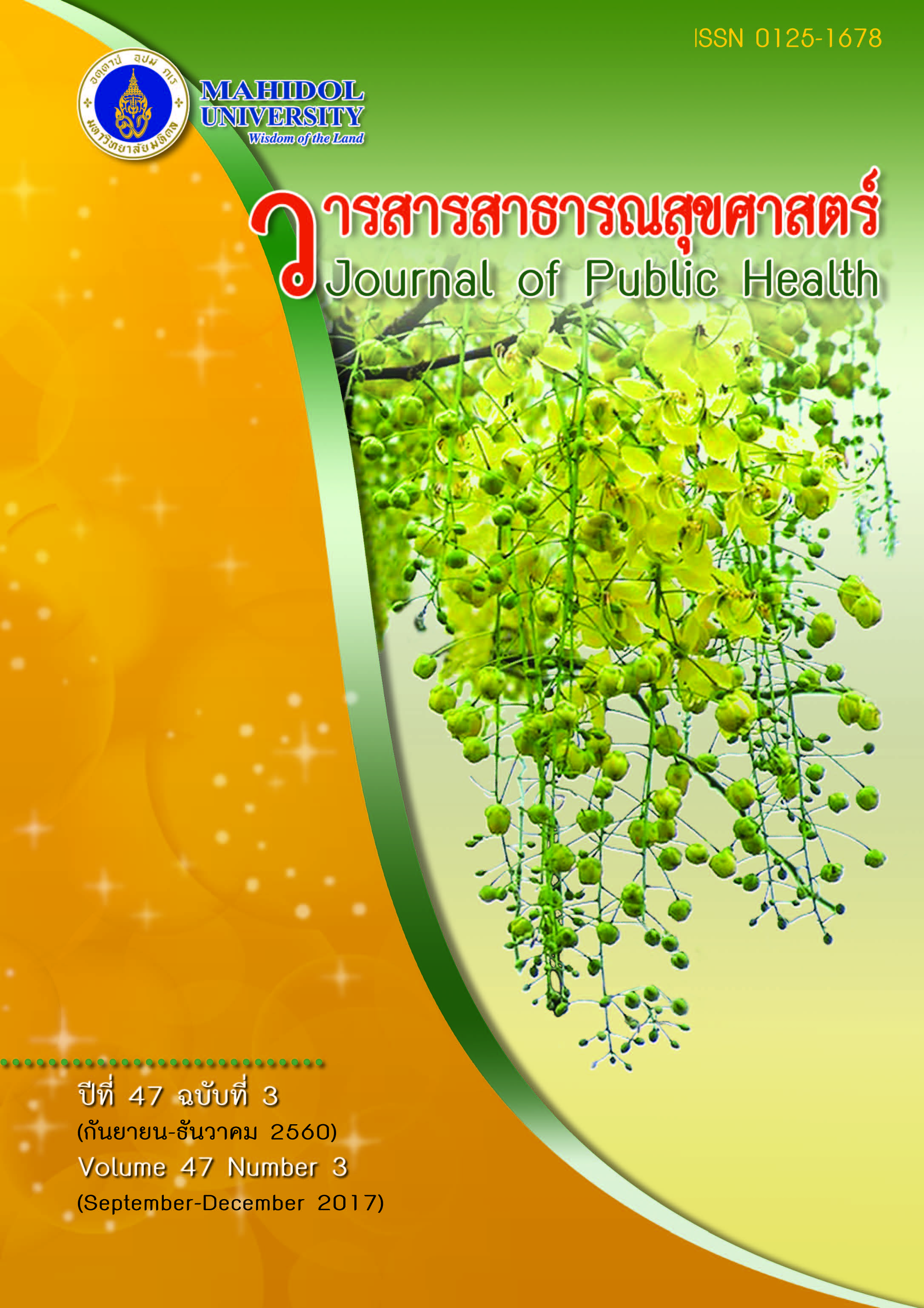การสำรวจหาอะแคนทามีบาในแหล่งน้ำธรรมชาติจากชุมชนรอบมหาวิทยาลัยพะเยา จังหวัดพะเยา ประเทศไทย (Survey of Acanthamoeba in Natural Water Sources in Communities around the University of Phayao, Phayao Province, Thailand)
Keywords:
อะแคนทามีบา, โรคกระจกตาอักเสบ, แหล่งน้ำธรรมชาติ, พะเยา, สัณฐานวิทยา, Acanthamoeba, morphology, keratitis, natural water sources, Phayao ProvinceAbstract
การสำรวจหาอะแคนทามีบาในแหล่งน้ำธรรมชาติจากชุมชนรอบมหาวิทยาลัยพะเยา จังหวัดพะเยา ประเทศไทย
อะแคนทามีบาเป็นอะมีบาอิสระที่พบได้ตามธรรมชาติ ซึ่งเป็นเชื้อฉวยโอกาสที่ก่อโรคกระจกตาอักเสบและสมองอักเสบชนิดแกรนูโลมาในมนุษย์ การศึกษานี้มีวัตถุประสงค์เพื่อสำรวจความชุกของอะแคนทามีบาจากแหล่งน้ำธรรมชาติรอบมหาวิทยาลัยพะเยา จังหวัดพะเยา สำรวจหาอะแคนทามีบาจากน้ำ 60 ตัวอย่างโดยการเพาะเลี้ยง และจำแนกกลุ่มโดยลักษณะทางสัณฐานวิทยาของซีสต์ตามวิธีการของ Pussard และ Pons ผลการทดลองพบอะแคนทามีบาร้อยละ 48.3 ซึ่งความชุกไม่มีความแตกต่างกันในพื้นที่เก็บตัวอย่างระหว่างแหล่งน้ำในหมู่บ้านและทุ่งนา (p>0.05) เมื่อจัดจำแนกซีสต์พบอะแคนทามีบาทั้งกลุ่ม 1 กลุ่ม 2 และกลุ่ม 3 ร้อยละ 1.7, 16.7, และ 21.6 ตามลำดับ บางตัวอย่างพบกลุ่ม 2 และกลุ่ม 3 ร่วมกันร้อยละ 8.3 ซีสต์ที่พบมีลักษณะสอดคล้องกับ A. castellani, A. polyphaga, A. triangularis, และ A. culbertsoni ซึ่งจัดอยู่ในกลุ่ม 2 และกลุ่ม 3 ที่มีรายงานความสัมพันธ์ก่อให้เกิดโรคกระจกตาอักเสบในประเทศไทย ส่งผลให้ประชาชนในพื้นที่มีโอกาสติดเชื้อจากแหล่งน้ำนั้น ในเบื้องต้นนิยมใช้ลักษณะของซีสต์ในการจำแนกกลุ่มแต่อาจยังไม่แม่นยำและเพียงพอต่อการจำแนกชนิดของอะแคนทามีบาที่มีความสัมพันธ์ก่อโรคในมนุษย์ จึงควรมีการศึกษาเพิ่มเติมโดยใช้สัตว์ทดลองและเทคนิคระดับโมเลกุลต่อไป
Survey of Acanthamoeba in Natural Water Sources in Communities around the University of Phayao, Phayao Province, Thailand
Acanthamoeba is a free-living amoeba found in the natural environment. This parasite causes opportunistic infection in humans known as Acanthamoeba keratitis (AK) and granulomatous amoebic encephalitis (GAE). This study aimed to survey the prevalence of Acanthamoeba cysts in natural water sources around the University of Phayao, Phayao Province, Thailand. A total of 60 water samples were cultured and observed for morphological cysts using Pussard and Pons criteria. According to the experiments, Acanthamoeba was found in 48.3% of the total water samples. No significant difference was found between natural water sources within the villages and rice fields regarding the cyst detection rate (p>0.05). Based on Pussard and Pons criteria, Acanthamoeba cysts were classified as group I, II and III at 1.7%, 16.7% and 21.6% respectively, and some samples were found to be a mixed detection of groups II and III at 8.3%. In this survey, detected cysts were morphologically similar to A. castellani, A. polyphaga, A. triangularis and A. culbertsoni as groups II and III members, which are associated with Acanthamoeba keratitis cases in Thailand. Thus, the local people are occasionally infected with Acanthamoeba from natural water sources. However, the morphology and identification of cysts is commonly an initial classification, and inaccurate and insufficient identification of pathogenic Acanthamoeba have occurred. Further studies on mouse inoculation for pathogenicity and molecular techniques for species identification are vital.
Downloads
Published
Issue
Section
License
Creative Commons License CC-BY-ND

